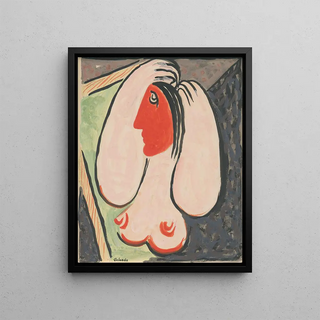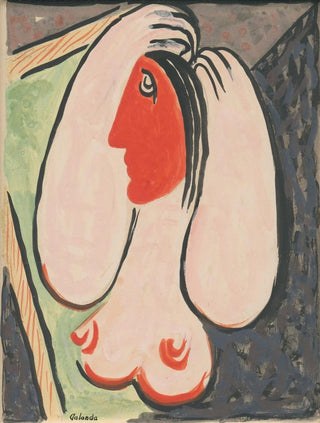Art print | In front of a mirror - Mikuláš Galanda


View from behind

Frame (optional)
Mikuláš Galanda's "Devant un miroir" is a captivating exploration of themes such as reflection, identity, and perception. This art print, imbued with an intimate atmosphere, invites us to delve into a universe where the mirror becomes a symbol of the human soul, a passage between the visible and the invisible. The artist, with undeniable mastery of color and light, manages to capture a fleeting moment, a contemplative instant where the viewer is prompted to question their own image. Through this work, Galanda offers us an entry point into a deeper reflection on our relationship with ourselves and others, while highlighting the beauty of the present moment.
Style and uniqueness of the art print
Mikuláš Galanda's style is distinguished by an approach that is both modern and rooted in artistic traditions. "Devant un miroir" is characterized by bold brushstrokes, a rich and vibrant color palette, and a carefully balanced composition. The way light plays on surfaces and textures reveals a particular sensitivity to nuances and shadows. The art print evokes a dreamlike atmosphere, where time seems suspended, inviting the viewer to immerse themselves in this bubble of serenity. The human figure, centered before the mirror, is treated in a way that emphasizes the dialogue between interior and exterior, appearance and reality. This mirror play, far from being trivial, raises questions about authenticity and the duality of human existence, making this work a true reflection of our condition.
The artist and his influence
Mikuláš Galanda, an emblematic figure of 20th-century Slovak art, knew how to mark his era with his unique vision and ability to transcend conventions. Trained in a complex artistic context, Galanda was influenced by the surrealist movement and modernist currents, integrating elements of these styles into his own visual language. His work is often perceived as a bridge between tradition and innovation, blending classical techniques with contemporary ideas. Galanda also played a role

Matte finish

View from behind

Frame (optional)
Mikuláš Galanda's "Devant un miroir" is a captivating exploration of themes such as reflection, identity, and perception. This art print, imbued with an intimate atmosphere, invites us to delve into a universe where the mirror becomes a symbol of the human soul, a passage between the visible and the invisible. The artist, with undeniable mastery of color and light, manages to capture a fleeting moment, a contemplative instant where the viewer is prompted to question their own image. Through this work, Galanda offers us an entry point into a deeper reflection on our relationship with ourselves and others, while highlighting the beauty of the present moment.
Style and uniqueness of the art print
Mikuláš Galanda's style is distinguished by an approach that is both modern and rooted in artistic traditions. "Devant un miroir" is characterized by bold brushstrokes, a rich and vibrant color palette, and a carefully balanced composition. The way light plays on surfaces and textures reveals a particular sensitivity to nuances and shadows. The art print evokes a dreamlike atmosphere, where time seems suspended, inviting the viewer to immerse themselves in this bubble of serenity. The human figure, centered before the mirror, is treated in a way that emphasizes the dialogue between interior and exterior, appearance and reality. This mirror play, far from being trivial, raises questions about authenticity and the duality of human existence, making this work a true reflection of our condition.
The artist and his influence
Mikuláš Galanda, an emblematic figure of 20th-century Slovak art, knew how to mark his era with his unique vision and ability to transcend conventions. Trained in a complex artistic context, Galanda was influenced by the surrealist movement and modernist currents, integrating elements of these styles into his own visual language. His work is often perceived as a bridge between tradition and innovation, blending classical techniques with contemporary ideas. Galanda also played a role






